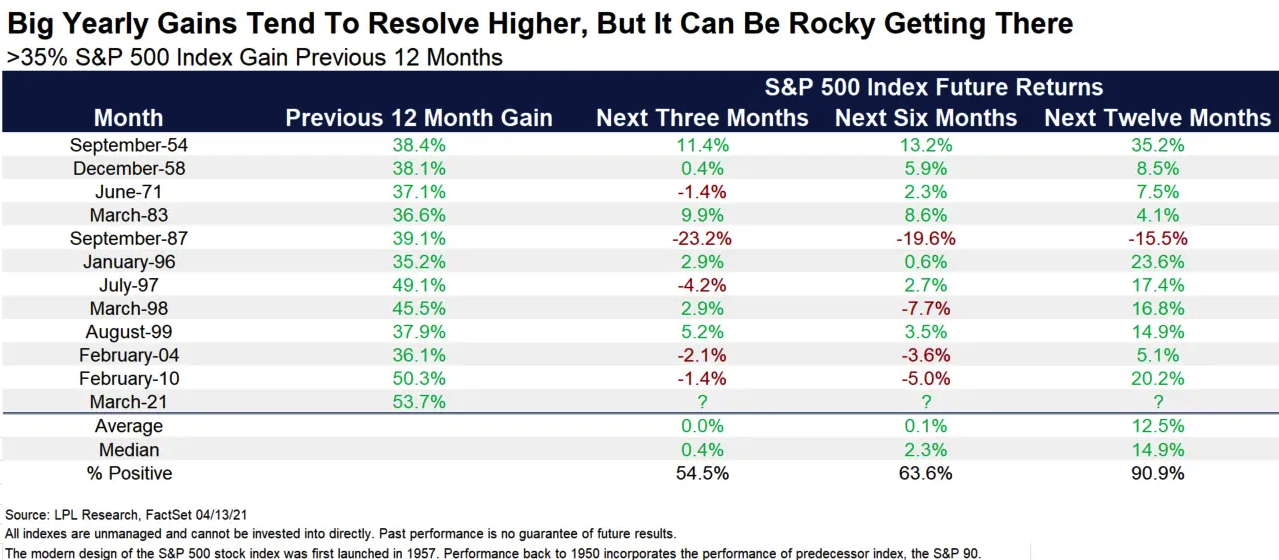Third, the S&P 500 was up nearly 54% in the 12 months ending March 2021, one of the largest yearly gains ever. Looking at previous times that had significant 12-month returns shows the potential for weak returns 1, 3, and 6 months later. This makes sense, as stocks could need some time to catch their breath. The good news? One year later the S&P 500 was higher more than 90% of the time, with only the year after the 1987 crash in the red. “It might seem counterintuitive to most investors, but big rallies like we’ve seen tend to mark the start of bull markets, not the end, so we wouldn’t bet on this bull market ending anytime soon,” explained LPL Financial Chief Market Strategist Ryan Detrick.
Lastly, overall market breadth is extremely strong. Again, this could suggest near-term there could be an exhaustion point, but this isn’t what you see at the end of bull markets, in fact, it tends to usually happen at the start of new bull markets. Currently, more than 95% of the components in the S&P 500 are above their 200-day moving average, a level only seen two other times, in December 2003 and September 2009. Looking back at 2004 and 2010, 2004 saw consolidation a good part of the year, while 2010 had a well-deserved 16% correction after the huge gains off the March 2009 lows. But the key point is after extreme market breadth like we are seeing now, overall higher prices and the bull market lasted for many more years.
Looking to the future, as George Burns said, we believe it could be a bright one for equity investors, particularly when we consider the return potential for stocks compared to cash and high-quality bonds.
Ryan Detrick is chief market strategist for LPL Financial.









